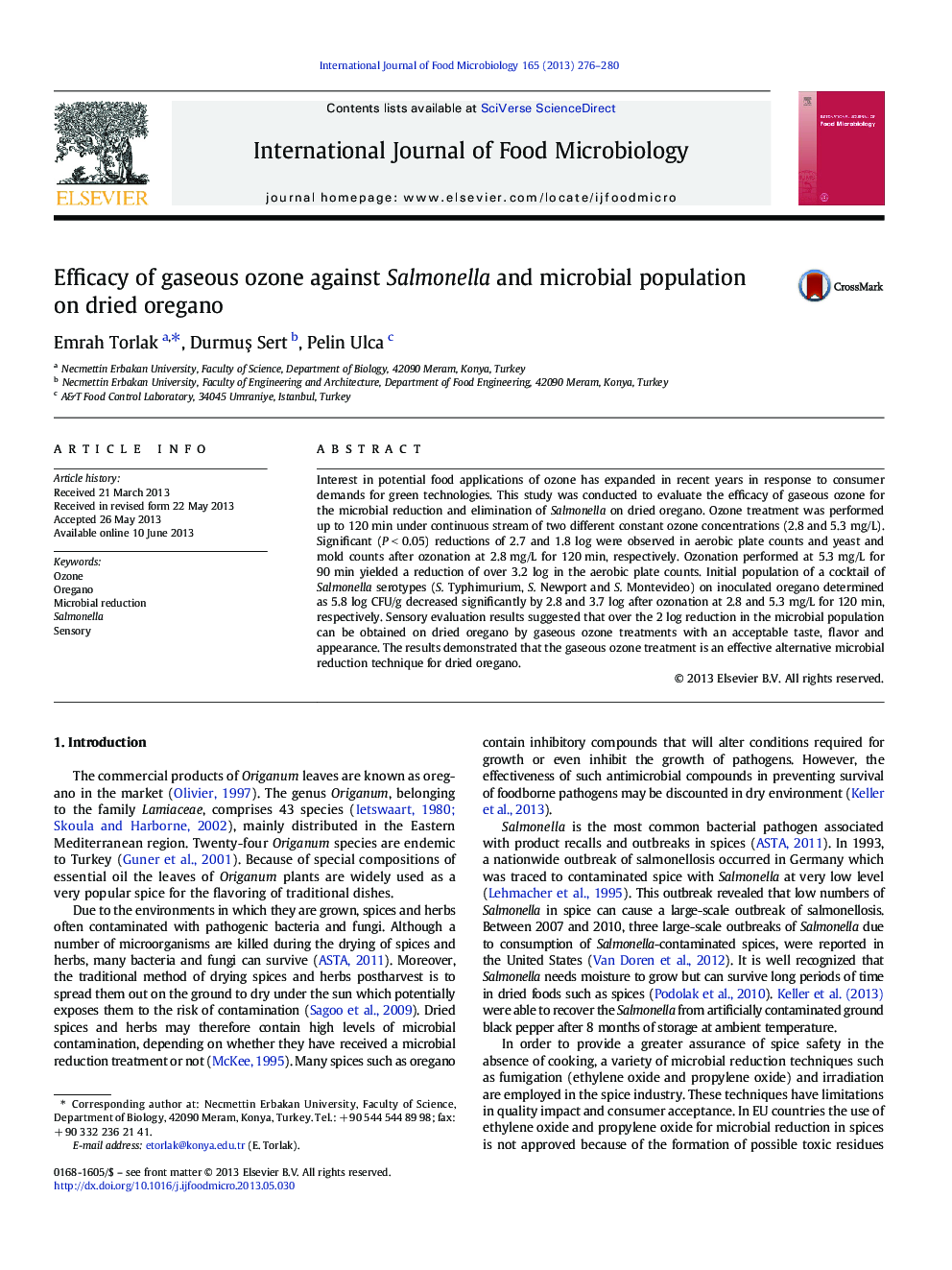| Article ID | Journal | Published Year | Pages | File Type |
|---|---|---|---|---|
| 4367273 | International Journal of Food Microbiology | 2013 | 5 Pages |
Abstract
Interest in potential food applications of ozone has expanded in recent years in response to consumer demands for green technologies. This study was conducted to evaluate the efficacy of gaseous ozone for the microbial reduction and elimination of Salmonella on dried oregano. Ozone treatment was performed up to 120 min under continuous stream of two different constant ozone concentrations (2.8 and 5.3 mg/L). Significant (P < 0.05) reductions of 2.7 and 1.8 log were observed in aerobic plate counts and yeast and mold counts after ozonation at 2.8 mg/L for 120 min, respectively. Ozonation performed at 5.3 mg/L for 90 min yielded a reduction of over 3.2 log in the aerobic plate counts. Initial population of a cocktail of Salmonella serotypes (S. Typhimurium, S. Newport and S. Montevideo) on inoculated oregano determined as 5.8 log CFU/g decreased significantly by 2.8 and 3.7 log after ozonation at 2.8 and 5.3 mg/L for 120 min, respectively. Sensory evaluation results suggested that over the 2 log reduction in the microbial population can be obtained on dried oregano by gaseous ozone treatments with an acceptable taste, flavor and appearance. The results demonstrated that the gaseous ozone treatment is an effective alternative microbial reduction technique for dried oregano.
Related Topics
Life Sciences
Agricultural and Biological Sciences
Food Science
Authors
Emrah Torlak, DurmuÅ Sert, Pelin Ulca,
